Persuasive writing techniques – Best resources & advice for KS3/4

Whether they're arguing for a good cause or selling the latest product, give your secondary students all the techniques and tricks they need to be able to write to persuade…

- by Teachwire
- Classroom expertise and free resources for teachers

Effective communication skills are vital for life. What better way to empower your students than by helping them to master a range of persuasive writing techniques?
Here we embark on an exploration of engaging resources and valuable advice to transform your classroom into a hub of compelling arguments and articulate expression. (We also have a round-up of persuasive writing KS2 resources.)
Persuasive writing techniques resources
Persuasive writing full scheme of work
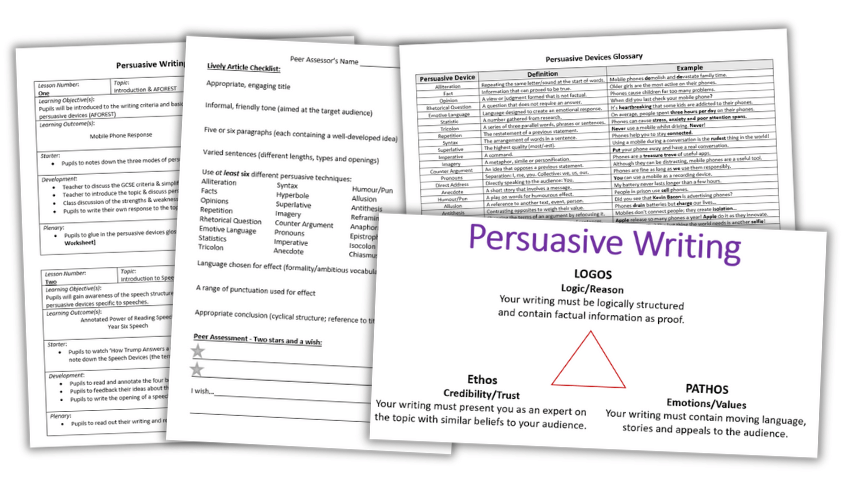
This free persuasive writing scheme for KS3/4 by teacher James Tickle contains 17 lessons’ worth of material. It covers speeches, informal and formal letters, articles and more…
Write a letter of complaint
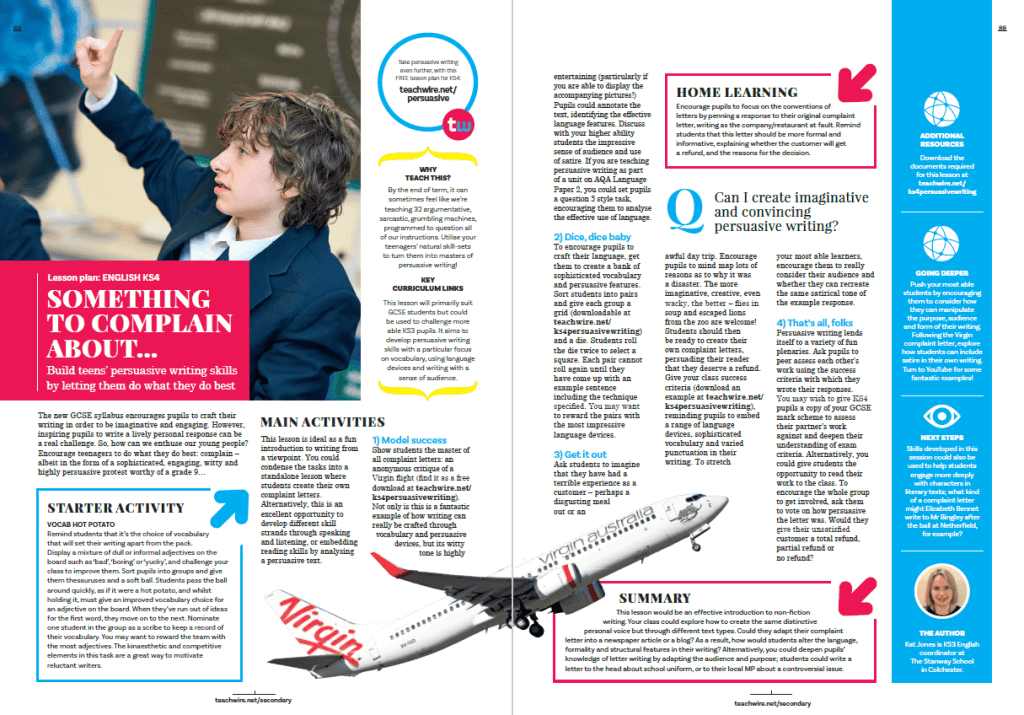
The GCSE syllabus encourages pupils to craft their writing to be imaginative and engaging. However, inspiring pupils to write a lively personal response can be a real challenge.
So, how can we enthuse our young people? Encourage teenagers to do what they do best: complain. This free lesson plan will encourage pupils to write a sophisticated, engaging, witty and highly persuasive protest worthy of a grade 9.
Persuasive writing techniques handout

Print out this free handout and give it to your pupils to help them improve their use of persuasive writing techniques. It covers opening with an anecdote, including some clever sentence structures and more.
Charlie Chaplin’s The Great Dictator
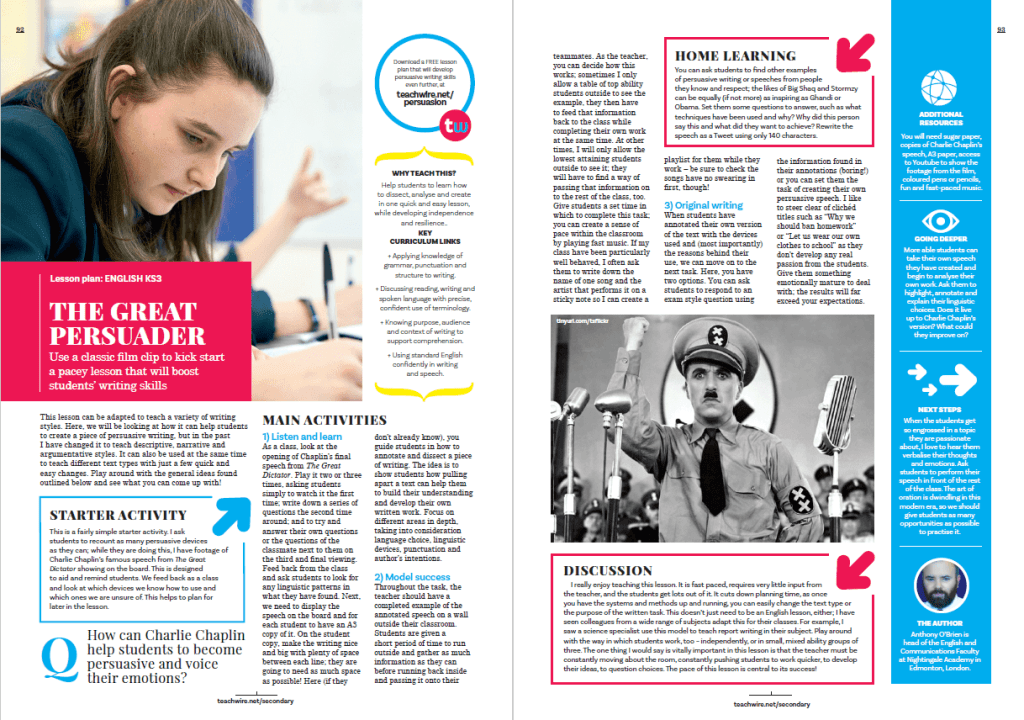
How can Charlie Chaplin help students to become persuasive and voice their emotions? This free lesson plan looks at how he can help students to create a piece of persuasive writing. You can also easily adapt it for teaching descriptive, narrative and argumentative styles.
‘Would you rather’ KS3 activity
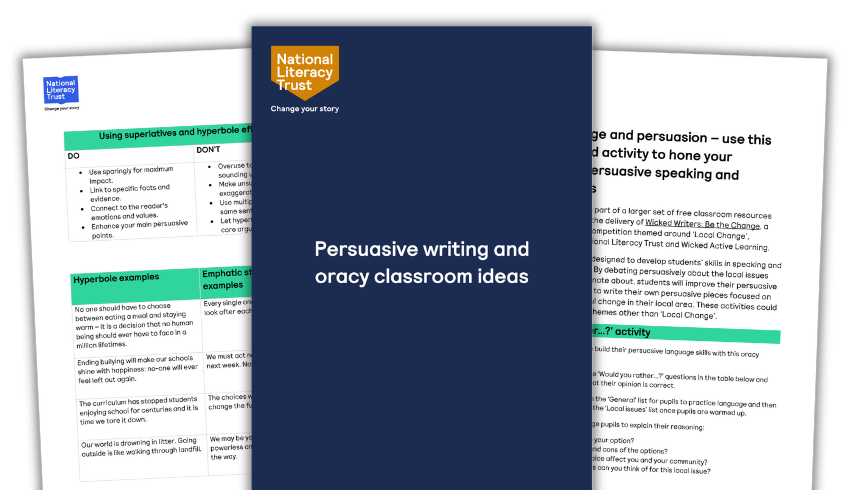
This free persuasive writing resource will support you to teach persuasive vocabulary, emphatic sentences and hyperbole in KS3. Pupils will take part in a fun ‘would you rather’ debate.
Persuasive techniques slideshow
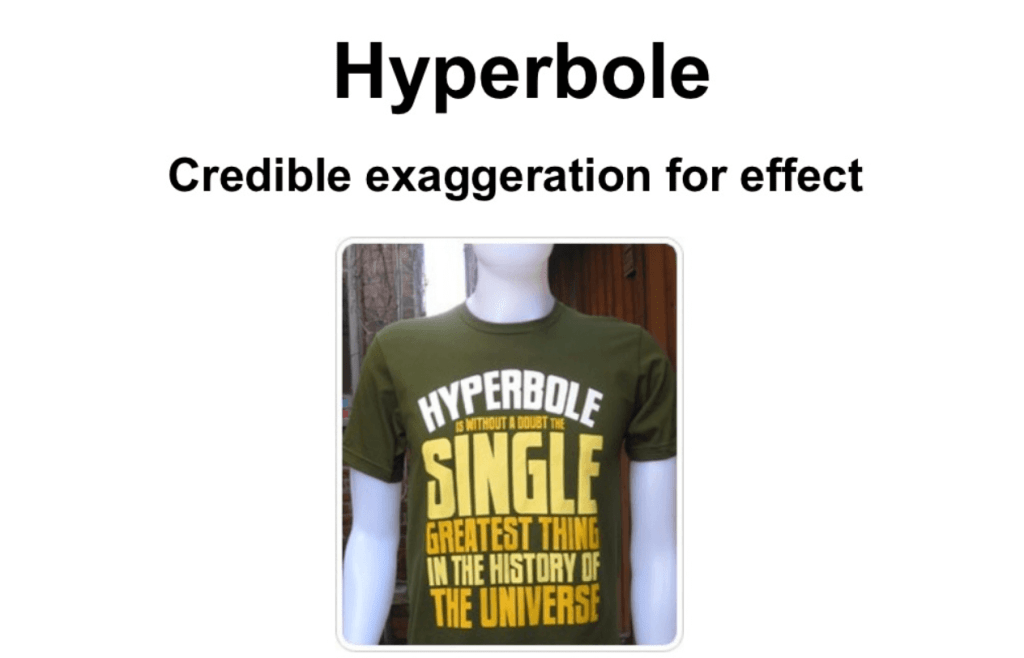
This Slideshare presentation offers a great introduction to persuasive writing and its concepts and terms for students.
Persuasion techniques

This handy printable PDF is packed with persuasive writing techniques. It will serve as a great introduction or reminder for your pupils.
It’s got everything from alliteration to hyperbole, and imperatives to repetition, all wrapped up with succinct descriptions and definitions.
Suffragettes and votes
This Votes for Women video and resource pack from UK Parliament contains activity ideas including a persuasive letter writing exercise. Pupils need to write a letter from an imprisoned Suffragette to their sibling. In it, they need to explain why they are willing to go to prison for their cause.
Influencing world leaders
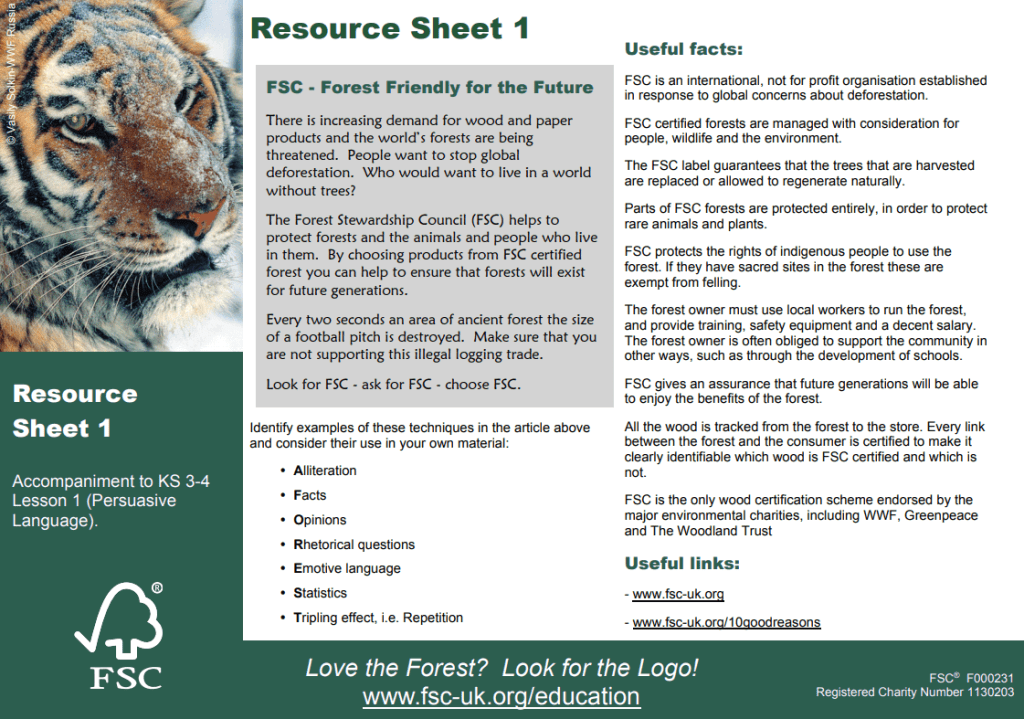
This lesson plan is part of a range of free resources produced for Send My Friend to School. This is the schools activity of the UK Global Campaign for Education. It asks world leaders to keep their promise to get all children into school.
The main task for students is to write a letter persuading someone with influence to support the rights of all children to get an education. The resource includes activities, discussion points, and two example letters.
10 tips for better persuasive writing

Students’ responses to persuasive writing assignments can become more considered and compelling by observing some key techniques, says Anthony Cockerill…
Throughout my teaching career, I’ve found that there’s a handful of topics for class discussion that never fail to get students to participate enthusiastically. Somewhat surprisingly, one of those is the topic of education itself.
I wanted to capitalise on my students’ eagerness to thrash out the pluses and minuses of their own experiences of schooling, and to teach them the process of planning, drafting and editing a piece of persuasive writing.
I also wanted to establish some maxims for great writing, without imposing a rigid framework or a list of success criteria.
To produce what AQA calls ‘An enabling, provocative … controversial statement’ to prompt students into writing a response offering their own viewpoint, I came up this: ‘Education is no longer fit for purpose’. This, I reasoned, could be a persuasive writing firecracker.
The following suggestions draw on my experiences of teaching what I eventually called ‘The Big School Debate’, though I’m sure you’ll also find them useful when applied to a topic of your choosing.
1 | Encourage students to plan broadly and gather ideas
Emphasise to students that to sustain their argument throughout the writing, they should develop a central idea and select reasons to support it. Examiners’ reports are clear that a crafted argument is crucial for success.
After screening stimulus material ranging from Sir Ken Robinson’s ‘Changing Paradigms’ lecture at the RSA and a Good Morning Britain interview with Katharine Birbalsingh, I fielded a classroom discussion in which I encouraged everyone to develop an individual response to the aforementioned controversial statement and to gather ideas in the form of a mind-map.
2 | Model the sequencing and structuring
I then gathered the students’ ideas into a series of on-screen text boxes to model how we might structure and sequence their ideas most powerfully.
Should we start with the strongest ideas first? Would the argument lose momentum this way? What about starting with the weakest ideas and building momentum as we go? What if we were to cluster them by theme?
The idea of clustering the ideas topically seemed like a sensible idea, but I suggested an alternative approach – grouping ideas by which mode of Aristotelian rhetoric they most suited.
A student proposed that in order to sustain powerful momentum throughout, we could open with the ‘ethos’ of the argument to establish a sense of virtue, followed by the ‘logos’ of the argument (an appeal to the reader’s sense of logic).
Last would be the ‘pathos’ of the argument, appealing to the reader’s emotions and contriving a powerful and lasting impact towards the end of the text.
3 | Open with an anecdote
A student in my class with an enviable grasp of writing to argue came up with this brilliant way to begin his piece:
‘In the southwest of China’s Sichuan Province sits a small village called Atuleer, where the local schoolchildren must climb an 800m shaky bamboo ladder up the side of a mountain’s sheer cliff face every single day, just to get to school.’
Another student who felt particularly strongly about school uniform produced a rather lacklustre opening, which contained the usual statistics about how many students in one school were sent home in the first week of term for flouting the rules.
But after reflecting on the importance of an immersive anecdote, she retooled it: ‘Doting mum Julie Fowler had only just arrived at work when the telephone call came…’
4 | Build explicit paragraph links to show visible cohesion
Students often productively employ the usual suspects, such as conjunctions or adverbials of time, within their writing. Another device that works really well is the explicit paragraph link, in which a motif or phrase in the last sentence of a paragraph is repeated in the first sentence of the next paragraph.
‘We live in a society where qualities such as creativity, individualism and entrepreneurialism are highly sought after by most employers, yet we continue to prepare our children for the factory,’ read the end of one student’s paragraph.
The next began: ‘Just like in a factory, kids today arrive at school not a minute too late or else they face punishment.’
This technique can help students employ much more bespoke and effective ways of linking ideas than the ubiquitous ‘Firstly… Secondly… Furthermore…’ approach.
5 | Emphasise the importance of personal pronouns
Students can create a rapport with the reader by addressing them directly. ‘We want our children to grow up fully prepared to take their place as happy and successful adults,’ wrote one student.
In this example, the first-person plural pronoun ‘we’ creates a sense of shared purpose and values, and also makes an assumption that the reader has already assented to the argument.
6 | Adopt the ‘tone’ of the powerful
The discourse of persuasion is the discourse of power. There are several gains a student might make in their own persuasive writing by ‘borrowing’ from powerful language.
I shared some examples from The Guardian, including the use of inverted commas to cast aspersions upon an idea, and posing a question immediately followed with a resoundingly clear answer.
I also encouraged my students to experiment with Latin connectives, such as ‘ergo’, ‘ad nauseam’ and ‘in perpetuum’ to suggest a sense of gravitas and bestow a high status ‘persona’ upon the writer.
7 | Experiment with sentence structures to showcase high-order thinking
Particular sentence structures can allow students to showcase sophisticated thinking. Subordinating conjunctions such as ‘however’ can allow a student to rebuff a counterargument, as can the preposition ‘despite’.
A student might use conjunctions such as ‘because’ and ‘since’ to demonstrate reasoning. Opening a sentence with a simile demonstrates understanding of loaded language.
8 | Change the level of formality for emphasis
A student might use parenthetical brackets to incorporate an informal joke or aside into their response. This can work extremely well, as the juxtaposition of humour or self-deprecation with the formal tone of argument can be an extremely sophisticated persuasive technique that gets the reader on side.
‘In the 1980s,’ wrote one student, ‘I made my way through school under the constant threat of being corporally punished, due to my failure to meet the school’s strict standards (I was usually to be found behind the bike sheds, fag in hand).’
I thought this student used a parenthetical aside to great effect. I also loved the way they adopted a ‘persona’ as part of their writing.
9 | Ensure students make thrifty use of persuasive devices
It’s important to ensure students don’t liberally scatter their responses with rhetorical devices.
Similarly, responses structured around mnemonics like DAFOREST can feel artificial and constrained.
Examiners’ reports are clear that a sustained argument should be led by the deeper structures of the argument itself, rather than simply signposted by persuasive devices.
10 | Write less, craft more
One student initially wrote over 2,000 words. The piece digressed at length about the merits of the education system in Finland, and in doing so really lost sight of the central thesis.
After cutting it down considerably, the student was still grappling with an overly long and unwieldy piece of writing. Offering verbal feedback as I sat with the student at a computer we pruned it brutally, then went back to edit and craft some more.
Anthony Cockerill is Head of English at Boroughbridge High School, North Yorkshire; for more information, visit anthonycockerill.com or follow @thecockerill.










